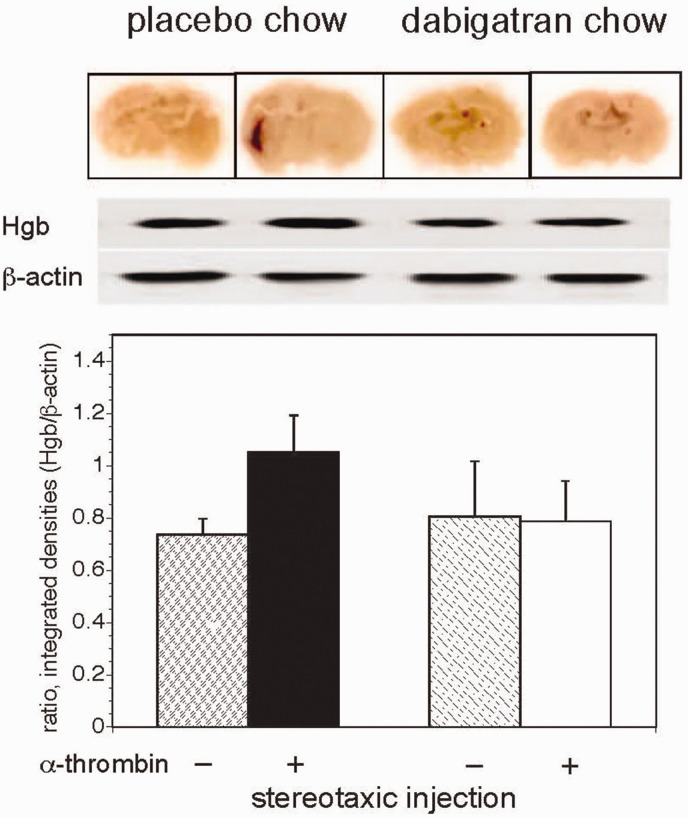Figure 7.
Dabigatran prevents α-thrombin-induced cerebral hemorrhage in vivo. Stereotaxic striatal α-thrombin injection in subjects receiving placebo-containing chow produced an increase in hemoglobin deposition over those receiving dabigatran-containing chow (n = 9 subjects in each condition, in a balanced factorial design of 36 animals receiving respective chows for 14 days each). Upper image. Coronal sections demonstrate hemoglobin deposition at 24 hours along the injection track in the placebo chow–α-thrombin group only following α-thrombin injection. All sections are scanned wet-mounts of immunohistochemistry preparations for hemoglobin at no magnification (normal image size), which explains the apparent lack of expected detail. Middle image. Evidence of increased hemoglobin immunoreactivity on Western immunoblot in the placebo chow–α-thrombin group compared to the other groups. Lower graph. Immunoreactive hemoglobin relative to β-actin from immunoblots in the middle panel. A GLM analysis of the hemoglobin disposition found a significant α-thrombin effect (p = 0.006), a dabigatran effect of borderline significance (p = 0.062), and a large α-thrombin × dabigatran interaction (p = 0.002). Subsequent pair-wise comparisons demonstrated an increased hemoglobin deposition in the placebo chow–α-thrombin group compared to the other three groups, which were not different among themselves (Bonferroni, α = 0.05).

